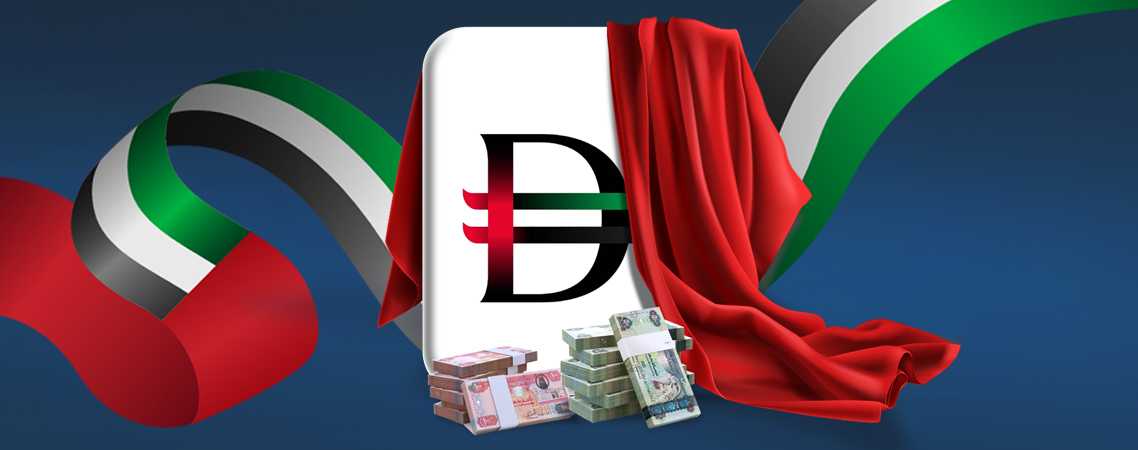Under Construction
Guidelines for Proper Usage of the New UAE Dirham Symbol and Identifying Common Misapplications
21-Jun-2025Everything You Need to Know About the New UAE Dirham Symbol:
In March 2025, the Central Bank of the UAE (CBUAE) introduced a groundbreaking design for the new symbol of the UAE Dirham. This symbolic shift aligns the UAE with global currency systems, where a single symbol represents the national currency such as the dollar ($), euro (€), and pound (£). The new Dirham symbol is set to simplify financial transactions, create consistency across various platforms, and unify how the UAE’s currency is visually represented. However with this change comes certain guidelines that must be followed to ensure proper usage.
Here’s everything you need to know about the new UAE Dirham symbol, how its implementation will affect daily payments and financial transactions.
The Importance of the New UAE Dirham Symbol
Before this redesign, the UAE Dirham didn’t have a standardized symbol. Instead, it was commonly abbreviated as AED, Dhs, or Dh in everyday conversations and financial transactions. Now, the CBUAE has introduced an official symbol to represent the Dirham, providing a unified shorthand for the UAE's national currency.
Just like the US Dollar is denoted by the "$" symbol or the Euro by "€", the new Dirham symbol aims to create a consistent and recognizable representation of the UAE's currency. This shift is not only a matter of aesthetics, but also a move towards simplifying transactions and ensuring global recognition.
The Path to Universal Accessibility: Unicode Approval
While the new Dirham symbol is poised to revolutionize the UAE’s financial landscape, it is yet to be approved by Unicode, the system that allows characters and symbols to be universally typed across devices and platforms. The approval of Unicode is crucial for making the symbol accessible on digital devices, allowing people to use it effortlessly in messages, emails, and websites.
Until then, businesses, government entities, and residents are advised to follow the guidelines provided by the Central Bank for how the symbol should be used in various financial contexts. Here’s a breakdown of the essential rules:
Guidelines for Using the New Dirham Symbol
1. Correct Placement of the Symbol
The Dirham symbol must always be placed before the numerical value it represents. For instance, if an amount is 500 Dirhams, it should be written as “(Dirham symbol) 500”. It is critical that the symbol is not placed after the number, such as "500 (Dirham symbol)". Additionally, the symbol should not be used alongside the "AED" abbreviation. Stick to either the symbol or the abbreviation in any context.
2. Consistency Across Platforms
The Dirham symbol should maintain consistent size, alignment, and proportions across both digital and printed materials. In mobile apps, online banking platforms, or invoices, the symbol must be placed to the left of the number, and should scale appropriately with the text.
3. Clear Space Around the Symbol
For maximum legibility and clarity, the Dirham symbol should always be surrounded by a minimum clear space equal to one-third of its height on all sides. This ensures that the symbol is easily distinguishable and does not get lost in the surrounding design elements, such as text or borders.
4. Font and Size Consistency
It’s crucial that the Dirham symbol matches the height, weight, and font style of the digits it accompanies. Whether used on invoices, receipts, or digital platforms, the symbol must align perfectly with the numerals in terms of size and visual weight. This maintains readability and avoids any confusion.
Common Mistakes to Avoid
The CBUAE has outlined several common mistakes that must be avoided in order to ensure the symbol is used correctly:
-
Incorrect Placement: Never place the symbol after the numeral. The correct way to write 500 Dirhams is “(Dirham symbol) 500”, not “500 (Dirham symbol)”.
-
Avoid Combining Abbreviations: The Dirham symbol should not be used alongside "AED" or "Dh". Choose one or the other to avoid redundancy.
-
Distortion: The symbol’s design, including the two horizontal bars and the letter “D,” must remain intact. Altering the proportions or shape of the symbol will compromise its integrity.
-
Legal and Formal Usage: In formal or legal contexts, where the amount is written out in words, avoid using the Dirham symbol. For example, it’s correct to say “Five Hundred Dirhams” but not “(Dirham symbol) Five Hundred Dirhams”.
Where the Dirham Symbol Should and Shouldn’t Appear
The Dirham symbol has specific applications where it should be used:
-
Invoices and Receipts: The symbol should be placed next to numerical values in receipts, invoices, and point-of-sale (POS) systems.
-
Retail Environments: Price tags and retail packaging should display the Dirham symbol before the price, like "(Dirham symbol) 50" for an item priced at fifty Dirhams.
-
Digital Platforms: Financial apps, calculators, and websites displaying currency values should adopt the new symbol for consistency and clarity.
However, the Dirham symbol is not intended for use in company logos, promotional branding, or decorative contexts. It should not be used as part of an app icon, splash screen, or header.
The Future of the Dirham Symbol
As the UAE prepares for the full implementation of the Dirham symbol, it’s important for businesses and individuals to familiarize themselves with the rules outlined by the Central Bank. Once the symbol is universally accessible via Unicode, it will be easier for everyone to adopt and use consistently across digital and physical platforms.
By adhering to these guidelines, the UAE can ensure that the new Dirham symbol is both practical and effective in reinforcing the country's global financial identity. Whether you're a business owner, a resident, or simply someone curious about the new symbol, following these practices will ensure you stay compliant and ahead of the curve.

